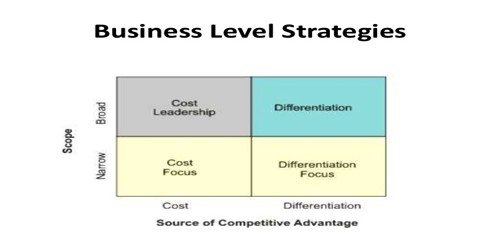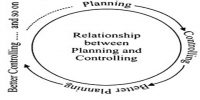Various Business Level Strategies
There are four generic strategies that are used to help organizations establish a competitive advantage over industry rivals. Finns may also choose to compete across a broad market or a focused market. We also briefly discuss a fish business level strategy called an integrated strategy.
(1) Cost Leadership:
Organizations compete for a wide customer based on price. Price is based on internal efficiency in order to have a margin that will sustain above-average returns and cost to the customer so that customers will purchase your product/service. Works well when product/service is standardized can have generic goods that are acceptable to many customers, and can offer the lowest price. Continuous efforts to lower costs relative to competitors are necessary in order to successfully be a cost leader. This can include:
- Building state of art efficient facilities (may make it costly for competition to imitate),
- Maintain tight control over production and overhead costs,
- Minimize the cost of sales, R&D, and service.
(2) Differentiation:
Value is provided to customers through the unique features and characteristics of an organization’s products rather than by the lowest price. This is done through high quality, features, high customer service, rapid product innovation, advanced technological features, image management, etc. (Some companies that follow this strategy: Rolex; Intel, Ralph Lauren).
Create Value by:
- Lowering Buyers’ Costs – Higher quality Means fewer breakdowns, quicker response to problems.
- Raising Buyers’ Performance – Buyer may improve performance, have a higher level of enjoyment.
- Sustainability – Creating barriers by perceptions of uniqueness and reputation, creating high switching costs through differentiation and uniqueness.
Risks of Using a Differentiation Strategy –
- Uniqueness
- Imitation
- Loss of Value.
(3) Focused Low Cost:
Organizations not only compete on price but also select a small segment of the market to provide goods and services to. For example, a company that sells only to the U.S. government.
(4) Focused Differentiation
Organizations not only compete based on differentiation but also select a small segment of the market to provide goods and services.
Focused Strategies – Strategies that seek to serve the needs of a particular customer segment (e.g., federal gov’t).
Companies that use focused strategies may be able to serve the smaller segment (e.g., business travelers) better than competitors who have a wider base of customers. This is especially true when special needs make it difficult for industry-wide competitors to serve the needs of this group of customers. By serving a segment that was previously poorly segmented an organization has a unique capability to serve the niche.
Risks of Using Focused Strategies:
- Maybe out focused by competitors (even smaller segment)
- The segment may become of interest to the broad market firm(s).
(5) Using an Integrated Low-Cost/Differentiation Strategy:
This new strategy may become more popular as global competition increases. Firms that use this strategy may see improvement in their ability to:
- Adaptability to environmental changes.
- Learn new skills and technologies.
- More effectively leverage core competencies across business units and products lines which should enable the firm to produce with differentiated features at lower costs.
Thus the customer realizes value based both on product features and a low price. Southwest Airlines is one example of a company that does use this strategy. However, organizations that choose this strategy must be careful not to become stuck in the middle i.e., not being able to manage successfully the five competitive forces and not achieve strategic, competitiveness. Must be capable of consistently reducing costs while adding differentiated features.















